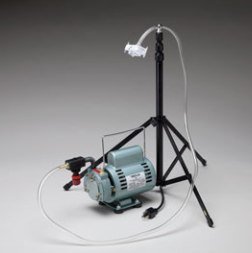Find a Mold Specialist Now
Click or Call, Toll-Free 24/7
How to Detect Mold
You may be wondering how to detect mold in your home and how to test for mold if you can’t see it. There has been so much information in the news lately about the health risks of mold growth in the home that people want to know how to make sure their home is mold-free and safe. Many don’t know how to check for mold, though, if it’s not clearly visible. We’ll tell you how to test for mold in your home.
To make sure the job is done right, we recommend you hire a professional to conduct the testing. It’s very easy to get incorrect results if you don’t do the testing properly.
Visual Inspection
The simplest way to detect mold is to do a visual inspection of your home. Pay special attention to any rooms that have a musty smell and rooms in which you’ve had some sort of water leak or flooding. Don’t just look at the walls and floors; look at the ceiling, look under sinks, look behind and beneath appliances, examine carpeting carefully and even peer inside your heating vents if you can. Don’t forget to check your attic; mold often grows there.
There are many different types of mold commonly found growing in homes and the appearance of mold varies depending on the type. Mold may appear black and slimy or it may be bluish or greenish in color. If you see something that looks like mold, it probably is mold. If you see discoloration that you can’t explain on a porous surface like carpeting, drywall or soft furniture, that might be mold as well and you should investigate further.
In the picture below, mold was found growing under wallpaper.
Next, we’ll explain how to test for mold even if it’s not clearly visible.
Surface Tests
If you aren’t sure if you have mold growing on a surface or not, you can purchase a test for mold on surfaces. The instructions that come with the test will explain how to detect mold on household surfaces, using either swabs or special tape. Surface tests are useful because they can narrow down the location of mold for you. In order to properly remove mold, you have to know how to detect mold.
If you find mold on one surface in a room, you might want to test other surfaces even if they do not appear to be moldy. In very small amounts, mold may not be easy to see. For example, if there is mold on your bathroom floor, there is a good chance there is also some mold on the bathroom walls and you need to make sure you locate and remove all the mold in order to prevent a recurrence of your mold problem.
Air Sampling
We recommend that you use an air sampling test for mold as well as a surface test. The instructions that come with the test will explain how to test for mold in the air. The reason we recommend an air sampling test is because even if you see no mold on any visible surfaces, there may be mold growing somewhere and if so, there are likely some spores drifting in the air. The air sampling test will let you know if you do have mold growing somewhere in your home, though you may have to do some detective work to find out where. Make sure you select an air sampling test that tests for both live and dead mold spores.
For More Information or Assistance
If you need more information on how to detect mold in your home, we recommend contacting a licensed professional. Licensed professionals know how to test for mold on surfaces and in the air, and they know all the places where mold can hide in a home. Professionals will also have more sophisticated testing equipment, which will give more accurate results.
Not only can professionals locate all the mold in your home, they can also tell you what strain or strains of mold are present there. If you are experiencing symptoms of exposure to mold, knowing what strain or strains of mold you’re dealing with may help your doctor prescribe the most effective treatment for you.
To locate a licensed professional to test for mold in your home, simply follow this link.
Return From How To Detect Mold To Our Main Toxic Mold Test Page
Black Mold Health Symptoms Home Page






